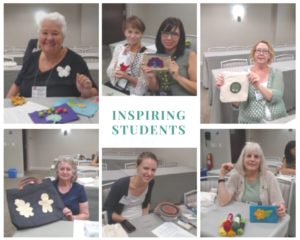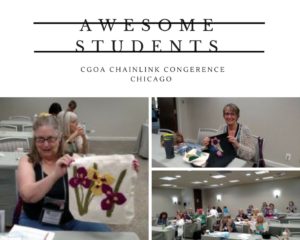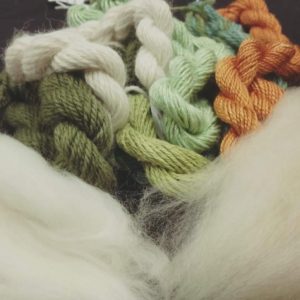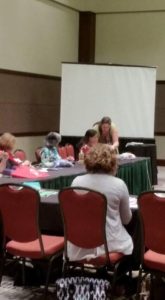 I am getting ready for my latest test…oh, I mean teaching opportunity! I am teaching this July in Portland, Oregon, at the Crochet Guild of America’s annual crochet conference (also known as Chainlink).
I am getting ready for my latest test…oh, I mean teaching opportunity! I am teaching this July in Portland, Oregon, at the Crochet Guild of America’s annual crochet conference (also known as Chainlink).
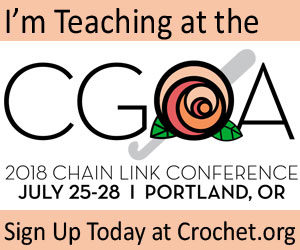 I say I am getting ready for my latest test, because ready that is how I feel, and the way I treat it. I put a lot of work in behind the scenes for my classes, to ensure that I cover the topic in the most approachable way, and then have a couple of back up approaches in case the explanation doesn’t resonate with the audience.
I say I am getting ready for my latest test, because ready that is how I feel, and the way I treat it. I put a lot of work in behind the scenes for my classes, to ensure that I cover the topic in the most approachable way, and then have a couple of back up approaches in case the explanation doesn’t resonate with the audience.
So, I am brushing up on a couple of different topics for Portland, like Drop Spindle. I will be teaching a 6 hour class on creating your own yarn using a drop spindle. I am doing extra research on various drop spindles, various fibers, the history, and different approaches to spinning, to make sure I am not missing any information.
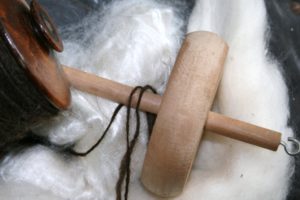 I am acquiring all of the materials a student needs to learn with and then some. I have a material fee for the class, because I want to make sure that my students get the best materials to learn with. I personally hate taking a course and attempt to get the items needed, get to the class and find that I found products that were not necessarily best for understanding the concept. Fortunately, when I procure materials for my class I can often get a discount for bulk purchase and pass that saving on to my students.
I am acquiring all of the materials a student needs to learn with and then some. I have a material fee for the class, because I want to make sure that my students get the best materials to learn with. I personally hate taking a course and attempt to get the items needed, get to the class and find that I found products that were not necessarily best for understanding the concept. Fortunately, when I procure materials for my class I can often get a discount for bulk purchase and pass that saving on to my students.
I am also testing and investigate more ways to dye yarn for my course Home Dyeing –Safe & Simple. There are always so many ideas that come when diving down a rabbit hole of content, and this class offers that as well. I find myself adding more approaches and techniques every time I teach this course, as so many new ideas have been generated and various artists are cultivating new techniques. Often times questions that student generate in class can add to the material of future classes, giving me new areas to research.
 Beads are another skill that can be ever evolving, my course Beading Three Ways, really should be renamed at this point, as I have added a few other ways over the years. From student questions, to new books on the market, to revisiting older techniques, this class probably covers at least 5 ways to work with beads now.
Beads are another skill that can be ever evolving, my course Beading Three Ways, really should be renamed at this point, as I have added a few other ways over the years. From student questions, to new books on the market, to revisiting older techniques, this class probably covers at least 5 ways to work with beads now.
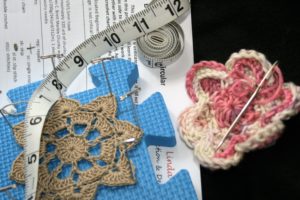 Probably my historically best attended class is What the Pattern Does Not Say. This class also is constantly revisited by me to add more content and update the terms. I find that the most daunting things for crocheters in understanding patterns, and I offer a fresh approach to understanding how to read a pattern, while pointing out tips and tricks that maybe causing you to fail, even before you start.
Probably my historically best attended class is What the Pattern Does Not Say. This class also is constantly revisited by me to add more content and update the terms. I find that the most daunting things for crocheters in understanding patterns, and I offer a fresh approach to understanding how to read a pattern, while pointing out tips and tricks that maybe causing you to fail, even before you start.
So even though this is only 4 classes, I will spend countless hours, days and weeks preparing. Then during the event of teaching the real test begins, ensuring that my students feel comfortable, that they feel inspired, and that they feel accomplished when they walk out of the door. Then it starts all over for my next teaching engagement.
Consider joining me, you can find the class listings at crochet.org.

